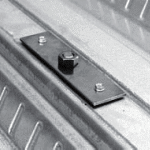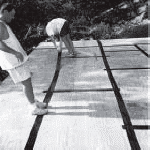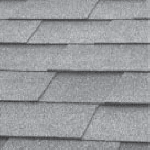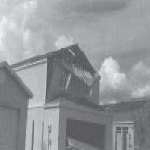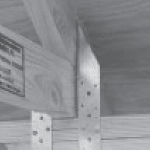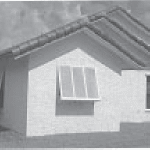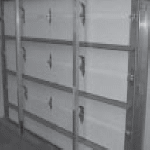

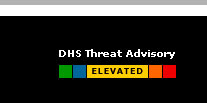
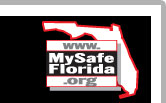

Alex Sink
Chief Financial Officer, State of Florida
The Wind Inspection Report: User's GuideA Closer Look at Your My Safe Florida Wind Inspection ReportIf you provided your insurance information at the time you applied (wind premium, dwelling coverage and hurricane deductible), your report will provide a range of possible premium discounts. If not, this information will not be available in your inspection report. Any discount for making your house stronger will only be applied to the windstorm portion of your premium. Possible discounts are estimates and do not factor in future rate changes. You will need to contact your agent or insurance company to verify the potential discounts you may qualify for on your wind premium as a result of mitigation improvements you make. The final pages of your report, which will vary in length, will summarize the technical information about your home. Your insurance company may want to see this summary before providing you discounts or credits on your wind premium. To help you get the most out of your inspection report, a step-by-step overview of your report is provided in the following pages. You are strongly encouraged to review this document carefully before reviewing your Wind Inspection Report. Getting Started – Defining Key Terms in Your Wind Inspection ReportThe following glossary of terms will help you understand the key elements of your wind inspection report. Hurricane Wind Resistance Rating – Every home inspected through the My Safe Florida Home program will receive a hurricane wind resistance rating. These ratings are provided on a scale of 0 to 100. The ratings are designed to give you an indication of how well your home is expected to perform when exposed to hurricane winds. Homes built to Florida’s strictest building code requirements will have higher ratings. These ratings have no relationship to the wind speed your home can endure in a hurricane. The following is a sample of how this information will be provided to you: Hurricane Wind Resistance Rating
Rating Cost Estimated Discount
Improvement Category – The My Safe Florida Home program has identified seven types of improvements under which all recommended improvements will fall. Recommended Improvement Plans – Your wind inspection report will contain up to three recommended improvement plans to make your home more resistant to hurricane winds. These plans are reflected in an easy-to-read chart and are labeled as plans A, B and C. All recommended plans will represent one or more of the seven improvement categories. This chart will also show the new hurricane wind resistance rating you will achieve when making recommended improvements, the estimated cost for each improvement plan, and the estimated savings on your annual windstorm insurance premium. Alternative Improvements – Within three of the seven improvement categories there are different alternatives. For example, there are three alternatives within Improvement 6&7 (Window and Door Protection). Additional Improvements – Unlike alternative improvements, which provide homeowners with choices within a specific recommended improvement, “additional improvements” describe improvements that are not part of Improvement Plans A, B or C but would still provide value in making your home more hurricane resistant. Overview of the Seven ImprovementsWe have listed the improvements below with descriptions and helpful visuals that are not contained in your Wind Inspection Report. The Improvement Plans (A, B and C) recommended for your home will include one or more of the seven improvements outlined below. If you apply and are eligible for a grant through the My Safe Florida Home program, you will only be able to use grant funds to make improvements 4, 6, and 7.
Improvement 1 - Improving the strength of your roof deck attachment. For example, if your roof consists of shingles nailed to plywood sheets, the inspection may reveal that the plywood sheets are not adequately nailed to your roof trusses, and that additional nails and/or longer nails need to be added to reduce the possibility of the plywood being blown off in a hurricane. There are two alternatives under Improvement 1 : 1a. Interior roof deck attachment (can be installed by accessing the underside of the roof via the attic). 1b. Exterior roof deck attachment (can be added when a new roof is installed).
Improvement 2 - Creating a secondary water barrier to prevent water intrusion. For example, using strips of “peel and stick-on” material that cover the joints between the plywood sheets on your roof to reduce leakage until repairs can be made if a hurricane blows off your roof shingles. There are two alternatives under Improvement 2: 2a. Interior secondary water barrier (can be installed by accessing the underside of the roof via the attic). 2b. Exterior secondary water barrier (can be added when a new roof is installed) .
Improvement 3 - Improving the survivability of your roof covering. For example, upgrading to stronger hurricane-resistant roof shingles, attached with properly sized and properly applied roofing nails, to reduce the susceptibility of your roof shingles blowing off in a hurricane.
Improvement 4 - Bracing gable-end walls. This improvement is made inside your attic to decrease chances that gable end walls will fail under hurricane wind loads.
Improvement 5 - Reinforcing roof-to-wall connections. For example, installing metal tie-down clips that attach roof rafters to walls to decrease chances that all or a portion of your roof will simply lift off your house during a hurricane.
Improvements 6 & 7 - Window and Door protection. Your wind inspection report will combine Improvements 6 & 7 because it is recommended they be done at the same time because the rating score will always reflect protection for all openings. There are three levels of opening protection under Improvement 6. Openings include windows, exterior sliding glass doors, a garage door, gable vents, and skylights.
Improvement 6a/7a. Standard – This improvement is the lowest-cost option for protecting openings. On a one-story house, this improvement would provide temporary structural panels for each window that would need to be installed each time a serious storm threatened the home. On a two-story home, this improvement would be a combination of standard shutters (first floor) and permanently attached shutters (second floor).
Improvement 6b/7b. Permanently Attached - Protective devices that are always attached to the house and only need to be deployed when a hurricane is approaching. Improvement 6c/7c. Permanently Deployed - These are protective devices such as impact-rated glass windows and doors or hurricane screens that require no installation when a hurricane is approaching. Some homeowners may want to upgrade from standard opening protection to permanently attached or permanently deployed protection as a matter of convenience. NOTE: For garage doors, you must replace the door with either a combination door and track system for wind or a hurricane-rated impact door. All opening protection devices must meet the Florida Building Code applicable to your area. Understanding Contractor Bid SheetsSection 2Once you have decided on specific improvements that you want to make to your home, make up to 3 copies of the contractor bid sheets in the Appendix of your inspection report and ask the bidding contractor to complete these forms. You will not need to return the complete bid sheets to us, they are for your use only. The sample chart on the next page is a very important part of your Wind Inspection Report. Using this chart will enable you to compare the costs for each element of your Improvement Plans A, B and C. It will also help you compare the costs of Recommended Improvements to Alternative Improvements and Additional Improvements. In addition, this chart will allow you to compare up to three bids for each type of improvement, although you may choose to go with one or two bids. It is important that you not allow contractors to see this page of your inspection report as it contains the estimated costs for each improvement. IMPORTANT: The Wind Inspection Report and contractor bid sheets will always show the lowest cost opening protection option. However, you may elect to pursue a permanent opening protection that is more expensive. Contractor Bid Sheets – Appendix A of your Wind Inspection Report will contain a series of contractor bid sheets. Contractors should be encouraged by homeowners to provide their bids using the bid sheets contained in your Wind Inspection Report since these bid sheets include specific information about your home’s features and dimensions that will assist contractors in providing bids. Recommended Improvements Chart (For Homeowner)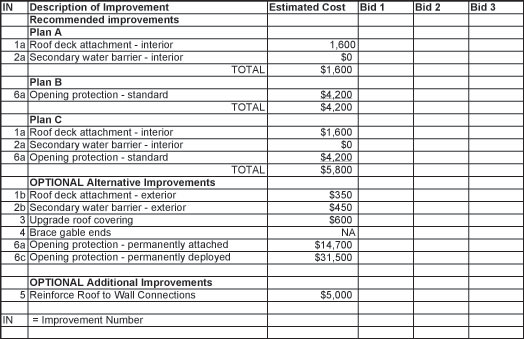 |
